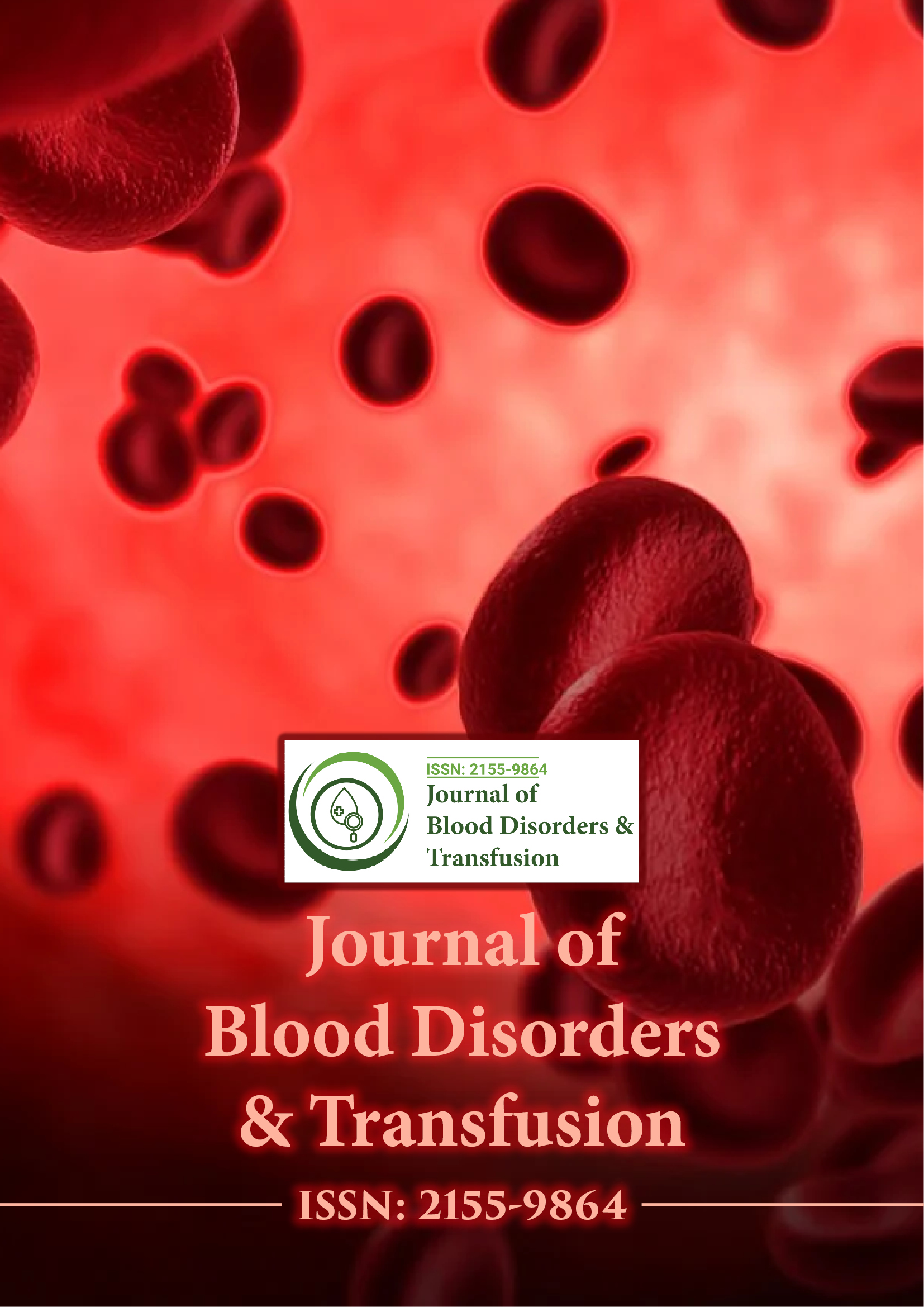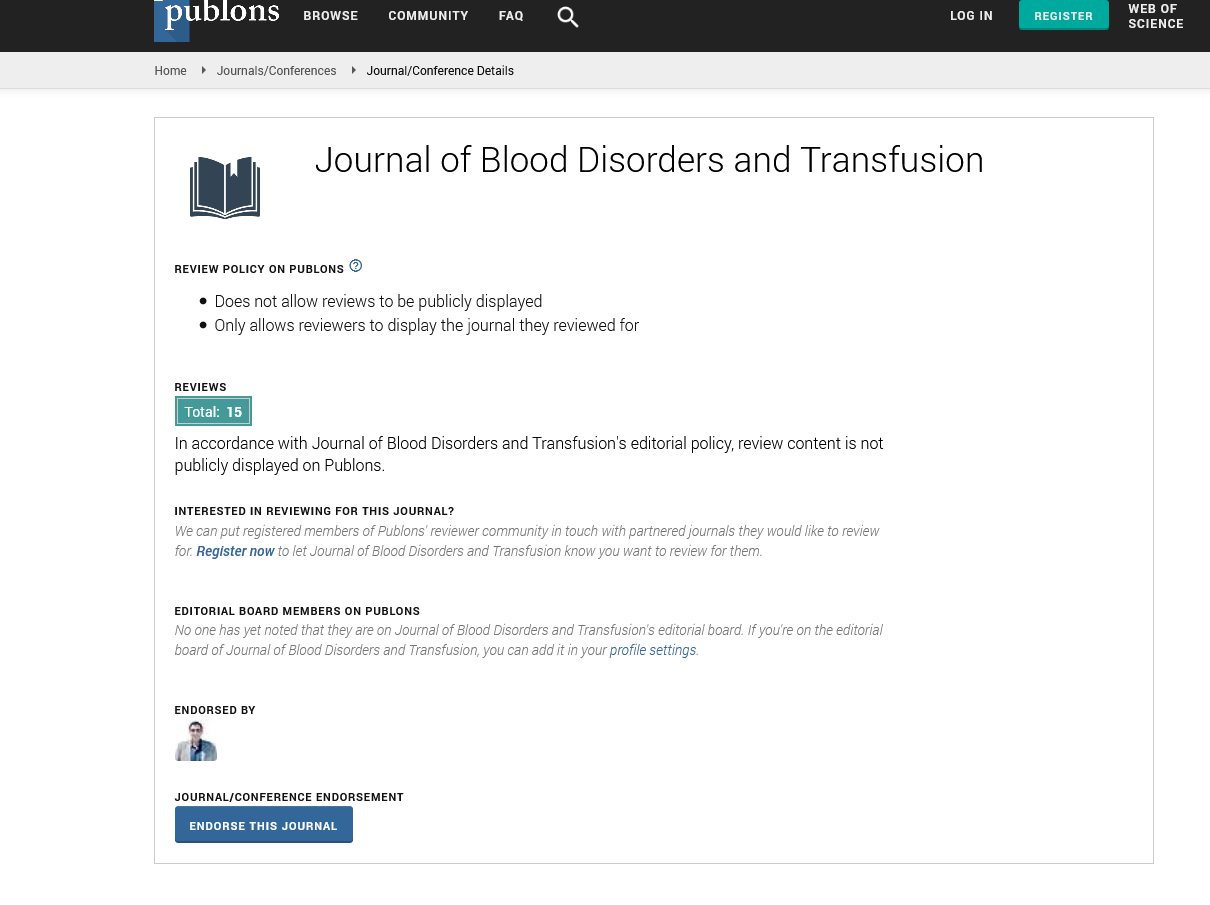Indexed In
- Open J Gate
- Genamics JournalSeek
- JournalTOCs
- Ulrich's Periodicals Directory
- RefSeek
- Hamdard University
- EBSCO A-Z
- OCLC- WorldCat
- Proquest Summons
- Publons
- Geneva Foundation for Medical Education and Research
- Euro Pub
- Google Scholar
Useful Links
Share This Page
Journal Flyer

Open Access Journals
- Agri and Aquaculture
- Biochemistry
- Bioinformatics & Systems Biology
- Business & Management
- Chemistry
- Clinical Sciences
- Engineering
- Food & Nutrition
- General Science
- Genetics & Molecular Biology
- Immunology & Microbiology
- Medical Sciences
- Neuroscience & Psychology
- Nursing & Health Care
- Pharmaceutical Sciences
Perspective - (2025) Volume 0, Issue 0
Insights into Platelet Regeneration Post Therapy based on RNA
Joseph Weyand*Received: 28-Mar-2025, Manuscript No. JBDT-25-28991 ; Editor assigned: 01-Apr-2025, Pre QC No. JBDT-25-28991 (PQ); Reviewed: 15-Apr-2025, QC No. JBDT-25-28991 ; Revised: 22-Apr-2025, Manuscript No. JBDT-25-28991 (R); Published: 29-Apr-2025, DOI: 10.4172/2155-9864.25.S13.061
Description
Aplastic Anemia (AA) is a rare hematological disorder characterized by pancytopenia and bone marrow failure, often resulting from immune-mediated destruction of hematopoietic stem and progenitor cells. Despite advancements in therapeutic approaches, including Immunosuppressive Therapy (IST) and Hematopoietic Stem Cell Transplantation (HSCT), predicting long-term recovery, especially of platelet counts, remains challenging. Platelets, although anucleate, contain residual RNA transcripts reflective of megakaryocyte activity and systemic physiological changes. Platelet transcriptomics, the study of RNA profiles in platelets, has emerged as a promising tool to monitor disease dynamics and therapeutic outcomes in various hematologic conditions.
Aplastic anemia
Patients with aplastic anemia often present with severe thrombocytopenia, exposing them to an elevated risk of bleeding and requiring frequent platelet transfusions. While IST with Anti-Thymocyte Globulin (ATG) and cyclosporine has significantly improved outcomes in patients ineligible for HSCT, not all individuals respond equally. Furthermore, early clinical indicators may not reliably predict sustained platelet count normalization.
Standard hematological assessments, such as platelet counts and bone marrow biopsies, provide limited information about ongoing cellular and molecular changes post-treatment. There is a growing need for biomarkers that reflect bone marrow recovery and megakaryopoiesis more dynamically and accurately. Platelet transcriptomics may fill this gap by offering a molecular snapshot of platelet production and related processes.
Application in assessing treatment effectiveness
The success of immunosuppressive therapy in aplastic anemia relies heavily on controlling the immune-mediated destruction of hematopoietic cells and allowing for the regeneration of bone marrow function. However, clinical response assessments can be delayed due to the slow nature of hematopoietic recovery. Platelet transcriptomic analysis offers a molecular approach that could provide earlier indications of therapeutic response.
By comparing RNA profiles before and after treatment, researchers can identify transcriptomic signatures associated with a positive response. For instance, an increase in transcripts linked to megakaryocyte maturation and platelet activation pathways may suggest effective suppression of immune-mediated damage and the re-establishment of hematopoiesis. Conversely, persistent expression of inflammatory or apoptotic genes in platelets could indicate suboptimal response or ongoing marrow suppression.
Predicting long-term platelet recovery
One of the key uncertainties in managing aplastic anemia is determining which patients will achieve sustained platelet count recovery over time. Even among those who initially respond to IST, long-term hematologic stability is not guaranteed. Platelet transcriptomics offers a method to assess the likelihood of durable recovery by identifying molecular markers associated with regenerative success.
Research has suggested that the expression levels of genes involved in platelet production, such as those encoding for thrombopoietin receptors, signaling molecules, and cytoskeletal proteins, may correlate with the rate and extent of platelet count normalization. Longitudinal studies tracking these markers could help identify early molecular trends predictive of long-term recovery.
Methodological considerations
While platelet transcriptomics offers significant potential, several methodological aspects must be carefully considered. Platelets are highly sensitive to external stimuli, and their RNA content can be altered by sample handling, collection methods and storage conditions. Standardization of protocols is essential to ensure reproducibility and comparability of results.
Moreover, the quantity of RNA in platelets is relatively low, requiring sensitive techniques for extraction and analysis. Advances in Next-Generation Sequencing (NGS), particularly RNA sequencing (RNA-seq), have made it possible to profile platelet transcriptomes with increasing accuracy. Bioinformatic tools must also be employed to filter out contamination from leukocytes or other cell types and to interpret complex gene expression data meaningfully.
Integration with clinical practice
For platelet transcriptomics to become a useful tool in clinical practice, it must be integrated with existing diagnostic and monitoring protocols. Ideally, transcriptomic analysis would complement routine blood counts, bone marrow assessments and clinical observations to provide a more comprehensive view of patient status.
In the future, clinicians may be able to utilize platelet RNA profiles to determine the effectiveness of IST early in the treatment course, predict long-term hematologic stability, and tailor follow-up schedules and supportive care accordingly. Integration with artificial intelligence tools may further enhance the interpretability and predictive power of transcriptomic data.
Platelet transcriptomics represents a promising approach for monitoring treatment response and predicting platelet recovery in patients with aplastic anemia. By analyzing the RNA content of platelets, clinicians can gain valuable insights into the underlying mechanisms of bone marrow activity, immune regulation and thrombopoiesis. Though challenges remain in standardization and validation, the integration of transcriptomic analysis into routine care could improve prognostication, optimize treatment strategies, and enhance patient outcomes. Continued research and technological development will be vital in advancing the clinical utility of this molecular tool in the management of aplastic anemia.
Citation: Weyand J (2025). Insights into Platelet Regeneration Post Therapy based on RNA. J Blood Disord Transfus. S13:061.
Copyright: © 2025 Weyand J. This is an open-access article distributed under the terms of the Creative Commons Attribution License, which permits unrestricted use, distribution, and reproduction in any medium, provided the original author and source are credited.

